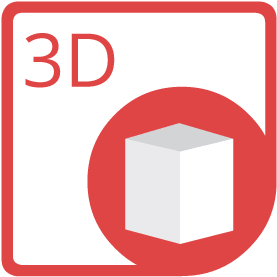
Convert JT to STL via Java
JT to STL conversion using Java library without any 3D modeling software.
How to Convert JT to STL Using Java
In order to render JT to STL, we’ll use
API which is a feature-rich, powerful and easy to use conversion API for Java platform. You can download its latest version directly from
and install it within your Maven-based project by adding the following configurations to the pom.xml.
Repository
<repository>
<id>AsposeJavaAPI</id>
<name>Aspose Java API</name>
<url>https://repository.aspose.com/repo/</url>
</repository>
Dependency
<dependency>
<groupId>com.aspose</groupId>
<artifactId>aspose-3d</artifactId>
<version>version of aspose-3d API</version>
<classifier>jdk17</classifier>
</dependency>
Steps to Convert JT to STL via Java
Java programmers can easily convert JT file to STL in just a few lines of code.
- Load JT file via the constructor of Scene class
- Create an instance of StlSaveOptions
- Set STL specific properties for advanced conversion
- Call Scene.save method
- Pass the output path with STL file extension & object of StlSaveOptions
System Requirements
Before running the Java conversion code, make sure that you have the following prerequisites.
- Microsoft Windows or a compatible OS with Java Runtime Environment for JSP/JSF Application and Desktop Applications.
- Get latest version of Aspose.3D for Java directly from Maven.
Java 3D Scene Manipulation Library
Aspose.3D is a CAD and Gameware API to load, modify and convert 3D files. API is a standalone and does not require any any 3D modeling or rendering software. One can easily use API for Discreet3DS, WavefrontOBJ, STL (ASCII, Binary), Universal3D, FBX (ASCII, Binary), Collada, glTF, PLY, GLB, DirectX and more formats.JT What is JT File Format?
JT (Jupiter Tessellation) is an efficient, industry-focused and flexible ISO-standardized 3D data format developed by Siemens PLM Software. Mechanical CAD domains of Aerospace, automotive industry, and Heavy Equipment use JT as their most leading 3D visualization format. JT format is a scene graph that supports the attributes and nodes that are CAD specific. Sophisticated compression techniques are used to store facet data (triangles). This format is structured to support visual attributes, product and manufacturing information (PMI), and Metadata. There is a good support for asynchronous streaming of content. In heavy mechanical industry, professionals use JT file in their CAD solutions and product lifecycle management (PLM) software programs to examine the geometry of complicated goods.
Read MoreSTL What is STL File Format?
STL, abbreviation for stereolithrography, is an interchangeable file format that represents 3-dimensional surface geometry. The file format finds its usage in several fields such as rapid prototyping, 3D printing and computer-aided manufacturing. It represents a surface as a series of small triangles, known as facets, where each facet is described by a perpendicular direction and three points representing the vertices of the triangle. Resultant data is used by applications to determine the cross section of the 3D shape to be built by the fabber. There is no information available in the STL file format for representation of colour, texture or other common CAD model attributes.
Read MoreOther Supported Conversions
You can also convert JT into many other file formats including few listed below.